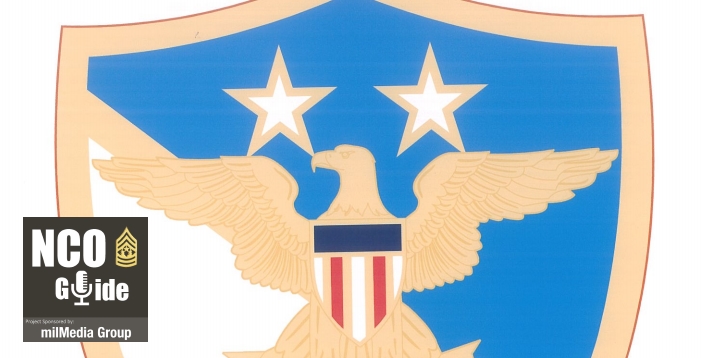
The Senior Enlisted Advisor (SEA) to the Chairman of the Joint Chiefs of Staff (CJCS), or SEAC, is a military position within the United States Department of Defense and is the most senior noncommissioned or petty officer overall in the United States Armed Forces. The SEAC is appointed by the Chairman of the Joint Chiefs of Staff to serve as a spokesperson to address the issues of enlisted personnel to the highest positions in the Department of Defense. As such the SEAC is the senior enlisted advisor to the Chairman of the Joint Chiefs of Staff, and serves at the pleasure of the Secretary of Defense. The SEAC’s exact duties vary, depending on the Chairman, though he generally devotes much time traveling throughout the Department of Defense observing training and communicating to service members and their families. The normal tour of assignment is four years, which runs concurrently with the Chairman.
History of SEAs
Although Army and Marine headquarters from battalions and regiments, up to divisions, to corps, army headquarters and higher, have traditionally each had a sergeant major; and Navy and Coast Guard vessels have traditionally each had a Command Master Chief or chief of the boat; the services’ national headquarters generally had no counterpart position. The Marine Corps was the exception, having a Sergeant Major from 1801 until 1946, and a Sergeant Major of the Marine Corps from 23 May 1957 onwards, as the senior enlisted advisor to the Commandant of the Marine Corps.
The other services followed during the Vietnam War, creating the counterpart positions of Sergeant Major of the Army in 1966, Master Chief Petty Officer of the Navy & Chief Master Sergeant of the Air Force in 1967, and Master Chief Petty Officer of the Coast Guard in 1969. The positions are generically or collectively referred to as “senior enlisted advisors” (“SEAs”). Only one Soldier, Sailor, Marine, Airman and Coast Guardsman can hold that rank at any one time (although they also hold the rank upon retirement per 10 USC § 1406(i)(1); moreover, the position’s singularity is not deemed to prevent the technical overlap of a few weeks while a recently “retired” SEA remains legally on active duty for the duration of his accrued back-leave, known as “transitional leave”). Each advises his or her service chief (Commandant of the Marine Corps, Chief of Staff of the Army, Chief of Naval Operations, Chief of Staff of the Air Force, and Commandant of the Coast Guard) and other senior service leaders on all enlisted matters, makes decisions affecting enlisted personnel and their families, and is often invited to testify before Congress.
History of the SEAC
The position of Senior Enlisted Advisor to the Chairman was created in 2005 under General Peter Pace. The newly created position was established to advise the Chairman on all matters involving enlisted personnel in a joint environment. The first member to hold this post was Cmd. Sgt. Maj. William Gainey, US Army. He was assinged those duties October 1, 2005 and retired April 25, 2008 and the The position remained vacant from April 25, 2008, to October 1, 2011 when Sgt. Maj. Bryan B. Battaglia, USMC was sworn in. On 11 December 2015 the Chairman of the Joint Chiefs of Staff, General Joseph Dunford, administered the Oath of Office to CSM John W. Troxell, USA when he became only the third enlisted member and second soldier to hold that office.
Positional Color
The Sergeant Major of the Army, Chief Master Sergeant of the Air Force and the Senior Enlisted Advisor to the JCS Chairman are the only enlisted members of the United States armed forces, below general/admiral grade, to be authorized a positional color (flag). The SEAC’s positional color is based upon those of the Chairman of the Joint Chiefs of Staff, and the Sergeant Major of the Army. The central element of the color is a rendering of the SEAC collar insignia, less the surrounding disk, with the eagle shown in proper colors (rather than simply gold as on the collar insignia). The diagonal line separating the blue in the upper right from the white in the lower left is continued to the corners of the flag.
Insignia
The insignia for the The Senior Enlisted Advisor to the Chairman of the Joint Chiefs of Staff was designed similar to the insignia for the Sergeant Major of the Army by the Institure of Heraldry, US Army and approved by the Director on Feb. 2, 2006. The insignia was based on the collar insignia of the Aide to the Chairman, minus the distinctive eagle.
Protocol
Despite the unique duties and protocol position of this position, the Senior Enlisted Advisor to the Chairman remains a noncommissioned officer and, as such, is obliged to render salute to all commissioned officers and warrant officers.
Pay and Grade
The Senior Enlisted Advisor to the Chairman and the other five SEAs hold pay grade E-9, as all sergeants major and command sergeants major, Command Master Chief Petty Officers and Command Chief Master Sergeants; however, in accordance with 37 U.S.C. § 1009, Schedule 8, an SEAC’s base pay is $7,489.80 per month ($89,877.60 per year), regardless of the incumbent’s service longevity. For comparison, any other E-9, even with the maximum forty years of service, would receive $7,195.80 per month. In addition to his base pay and normal tax-free allowances, the SEAC and the other SEAs are each entitled to a special tax-free allowance of $2,000.00 per annum, in accordance with 37 U.S.C. § 414(c).

You must be logged in to post a comment.